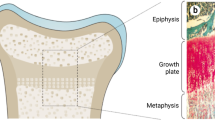Abstract
Objective
Children with complaints of not able to walk were investigated for rickets by appropriate history, clinical examination, serum biochemistry and radiology.
Methods
Children more than 1 yr were included. Each child was evaluated keeping in mind the possible causes of delayed walking. Also each child was thoroughly examined and diagnosed by combination of clinical, radiological, biochemical findings and response to treatment.
Results
Out of forty-two non-walkers during the study period, 25 patients turned out to be affected by nutritional rickets (60%). On follow-up at 3 weeks of treatment, all 25 patients (100%) showed radiological and biochemical response. Five patients were lost to follow-up after 3 weeks of treatment. Seventeen patients started walking within 3 months of treatment. Two patients did not start walking even after complete biochemical and radiological resolution. Radiological resolution, with limiting factor being the healing of lower end of ulna, averaged 5 months.
Conclusion
The study reveals that majority of ricketic non-walkers start walking within 2 to 5 months of appropriate treatment.
Similar content being viewed by others
References
Ward LM, Gaboury I, Ladhani M, Zlotkin S. Vitamin-D deficiency rickets among children in Canada. CMAJ 2007; 177: 161–166.
Ladhani S, Srinivasan L, Buchanan C, Allgrove J. Presentation of vitamin-D deficiency. Arch Dis Child 2004; 89: 781–784.
Mughal MZ, Salama H, Greenaway T, Laing I, Mawer EB. Florid rickets associated with prolonged breast-feeding without vitamin D supplementation. BMJ 1999; 318: 39–40.
Ghai OP, Paul VK, Gupta P. Growth and development. In Ghai OP, Gupta P, Paul VK, eds. Ghai Essential Pediatrics. Delhi; OP Ghai, 2004; 1–48.
Fida NM. Assessment of nutritional rickets in western Saudi Arabia. Saudi Med J 2003; 24: 337–340.
Blok BH, Grant CC, McNeil AR, Reid IR. Characteristics of children with florid vitamin D rickets in the Auckland region in 1998. N Z Med J 2000; 113: 374–376.
Shah BR, Finberg L. Single day therapy for nutritional vitamin D deficiency rickets: a preferred method. J Pediatr 1994; 125: 487–490.
Hillman LS, Haddad JG. Human perinatal vitamin D metabolism- 1,25-hydroxyvitamin D in maternal and cord blood. J Paediatr 1974; 84: 742–749.
Specker BL, Tsang RC, Hollis BW. Effect of race and diet on human milk vitamin D and 25-Hydroxyvitamin D. Am J Dis Child 1985; 139: 1134–1137.
Hollis BW, Roos BA, Draper HH, Lampert PW. Vitamin D and its metabolites in human and bovine milk. J Nutr 1981; 111: 1240–1248.
Salimpour R. Rickets in Tehran. Arch Dis Child 1975; 50: 63–66.
Majid Molla A, Badawi MH, al-Yaish S, Sharma P, el-Salam RS, Molla AM. Risk factors for nutritional rickets in children in Kuwait. Pediatr Int 2000; 42: 280–284.
Bassir M, Laborie S, Lapillonne A, Claris O, Chappuis MC, Salle BL. Vitamin deficiency in Iranian mothers and their neonates: a pilot study. Acta Paediatr 2001; 90: 577–579.
Nadia MF. Assessment of nutritional rickets in western Saudi Arabia. Saudi Med J 2003; 24: 337–340.
Sedrani SH, Abanmy A, Salman H, Al-Arabi K, Elidrissy A. Vitamin D status of Saudis: are Saudi children at risk of developing vitamin D deficiency rickets? Saudi Med J 1992; 13: 430–433.
Narchi H, El Jamil M, Kulaylat N. Symptomatic rickets in adolescence. Arch Dis Child 2001; 84: 501–503.
Kreiter SR, Schwartz RP, Kirkman HN Jr, Charlton PA, Calikoglu AS, Davenport ML. Nutritional rickets in African American breast-fed infants. J Pediatr 2000; 137: 153–157.
Dawodu A, Kadir A, Hardy DJ, Varady E. Nutritional rickets in then United Arab Emirates: an unresolved cause of childhood morbidity. Middle East Paediatrics 2001; 7: 12–13.
Cesur Y, Caksen H, Gündem A, Kirimi E, Odaba D. Comparison of low and high dose vitamin D treatment in nutritional vitamin D deficiency rickets. J Paediatr Endocrinol Metab 2003; 16: 1105–1109.
Kutluk G, Cetinkaya F, Basak M. Comparisons of oral calcium, high dose vitamin D and a combination of these in treatment of nutritional rickets in children. J Trop Paediatr 2002; 48: 351–353.
Author information
Authors and Affiliations
Corresponding author
Rights and permissions
About this article
Cite this article
Agarwal, A., Gulati, D., Rath, S. et al. Rickets: A cause of delayed walking in toddlers. Indian J Pediatr 76, 269–272 (2009). https://doi.org/10.1007/s12098-009-0052-y
Received:
Accepted:
Published:
Issue Date:
DOI: https://doi.org/10.1007/s12098-009-0052-y




